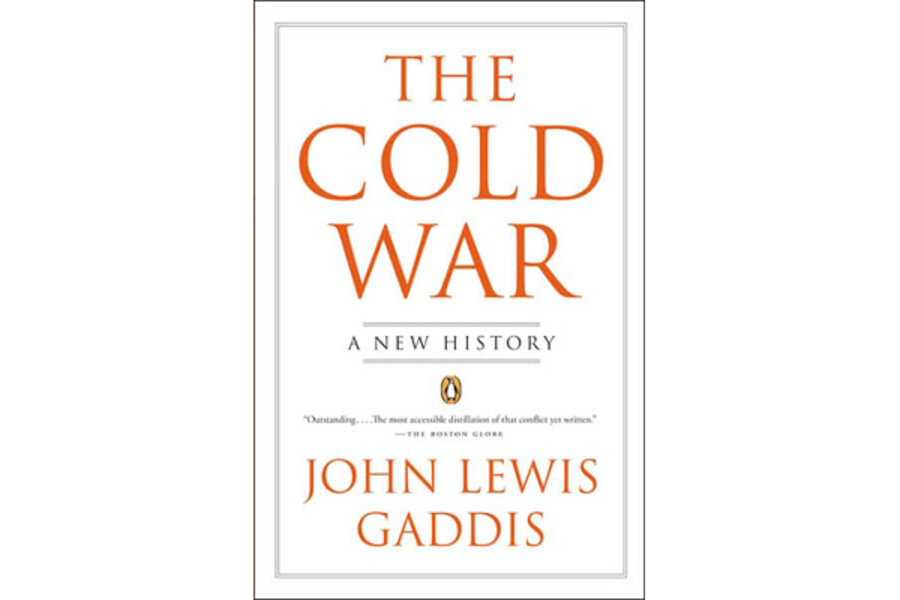Classic review: The Cold War – A New History
Loading...
[This review from the Monitor's archives originally ran on Dec. 20, 2005]. Fourteen years ago, in December 1991, Soviet leader Mikhail Gorbachev told his country that the cold war was over. In signing the decree that dissolved the Soviet Union and ended the East-West competition, Gorbachev also announced an end to the arms race and the "insane militarization" that had "distorted" his country's thinking and "undermined" its morals. And perhaps most significantly, he claimed "the threat of a world war" had come to an end.
With the demise of the Soviet state, the world seemed ready to enter an era in which the fear of a catastrophic war would no longer stalk humanity. Many believed the perils of the cold war would give way to a more tranquil age.
But it was not to be. Yesterday's fear of intercontinental ballistic missiles raining down on New York or Washington has been supplanted by today's fear of suicide attacks and dirty bombs.
10 most frequently challenged library books of 2010
And now, when boarding a plane gives many people pause, one looks almost longingly at the postwar decades, when the United States seemed to understand its adversary and believed Russian leaders were unlikely to act irrationally. After all, the cold logic of the cold war meant a Soviet attack on the United States would lead to a swift and devastating response.
As US leaders strain to manage America's current overseas dilemmas, The Cold War: A New History by John Lewis Gaddis transports us to an earlier era. In luminous detail, Gaddis, the Robert A. Lovett professor of history at Yale, traces the history of the conflict that dominated world politics from the end of World War II to the early 1990s. How long ago it all seems.
Gaddis, America's most distinguished cold war historian, has been writing about the subject for more than 30 years. (I co-edited a book on nuclear diplomacy with Gaddis and two other scholars in 1999.)
But unlike several of his previous books, which were intended for scholars, this one is aimed at a broader audience - for those who want to understand how the cold war began, how it unfolded, and why it ended when it did.
Given these objectives, Gaddis has succeeded splendidly. Indeed, in the book's narrative sweep, analytical insights, and deft incorporation of the most recent scholarship, Gaddis has written the best one-volume treatment of the East-West struggle. By examining how individual leaders, differing ideologies, domestic politics, and the nuclear threat shaped the competition, he's produced an altogether stimulating work.
Assessing the origins of the cold war, a subject that has long sparked bitter debate among historians, Gaddis fully places responsibility for the conflict on Stalin and the Soviet Union. (Some historians assign the US primary responsibility, while others contend that both Moscow and Washington were to blame.)
The key, Gaddis argues, is that the United States and the Soviet Union had fundamentally different visions for the postwar world. The Americans possessed a multilateral vision that sought to avoid war by encouraging cooperation among the great powers, fostering political self-determination and economic integration, and relying on the United Nations to enhance the security of all states.
But Stalin's postwar vision could not have been more different. The Soviet dictator sought to advance Russian interests by establishing a ring of subservient (nondemocratic) states around his country's vulnerable western flank, while awaiting the inevitable rivalries that he believed would cause fissures and perhaps even war among capitalist nations.
As Gaddis observes, Stalin was convinced that "capitalist fratricide" would eventually allow the Soviets to dominate Europe.
Beyond exploring the conflict's origins, Gaddis superbly evaluates how nuclear weapons and ideology influenced the struggle. The bomb helped keep the peace between Moscow and Washington because using it first meant a certain, cataclysmic response. Thus, it was not a legitimate option for rational policymakers.
In the ideological realm, Gaddis writes that each state's ideology was "meant to offer hope" (as do all ideologies). But while one ideology depended upon "the creation of fear" to function, the other had no "need to do so." And that, he asserts, explains the cold war's "basic ideological asymmetry."
To the surprise of even the most astute observers, the cold war came to a swift end between 1989 and 1991. While the actions of Mikhail Gorbachev, Ronald Reagan, and Pope John Paul II each contributed to the conflict's peaceful conclusion, world leaders were not central to ending the competition. The actions of "ordinary people" were crucial, Gaddis believes, for it was citizens in Budapest, Warsaw, Leipzig, Prague, and Bucharest who boldly threw off the shackles that had bound them for so long.
To be sure, Gorbachev decided Moscow was no longer prepared to maintain the old repressive order. But the liberation of millions was catalyzed by regular men and women who had the capacity to envision a better existence and the will to achieve it.
There were few more uplifting moments in 20th-century history, and it is easy to reflect on those heroic days with a certain wistfulness.
• Jonathan Rosenberg teaches American history at Hunter College, the City University of New York.






